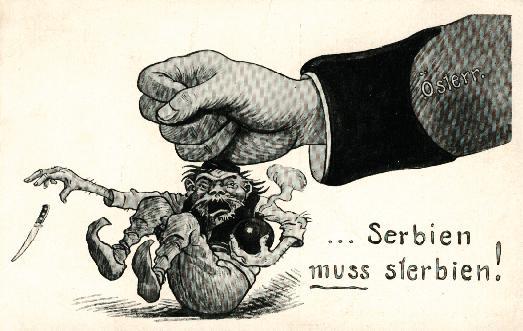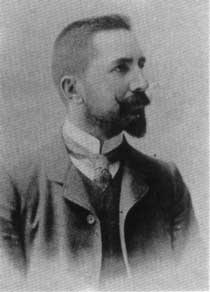|
Anti-Serbian
Anti-Serb sentiment or Serbophobia ( sr-Cyrl-Latn, србофобија, srbofobija, separator=" / ") is a generally negative view of Serbs as an ethnic group. Historically it has been a basis for the persecution of ethnic Serbs. A distinctive form of anti-Serb sentiment is anti-Serbian sentiment, which can be defined as a generally negative view of Serbia as a nation-state for Serbs. Another form of anti-Serb sentiment is a generally-negative view of Republika Srpska, the Serb-majority entity in Bosnia and Herzegovina. The best known historical proponent of anti-Serb sentiment was the 19th- and 20th-century Croatian Party of Rights. The most extreme elements of this party became the Ustasha in the Kingdom of Yugoslavia, a Croatian fascist organization that came to power during World War II and instituted racial laws that specifically targeted Serbs, Jews, Roma and dissidents. This culminated in the genocide of Serbs and members of other minority groups that lived in the Ind ... [...More Info...] [...Related Items...] OR: [Wikipedia] [Google] [Baidu] |
Party Of Rights
The Party of Rights ( hr, Stranka prava) was a Croatian nationalism, Croatian nationalist political party in Kingdom of Croatia-Slavonia and later in Kingdom of Serbs, Croats and Slovenes. It was founded in 1861 by Ante Starčević and Eugen Kvaternik, two influential nationalist politicians who advocated for greater Croatian autonomy and later for the independence of the Croatian state. Moderate and hardline nationalist factions existed during the period and after Starčević's death, the party would embrace Anti-Serb sentiment, anti-Serb, anti-Yugoslav and Republicanism, Republicanist leadership. In 1929, the party was dissolved after the proclamation of the 6 January Dictatorship and soon after, some members joined the underground organization Ustaše which was led by Ante Pavelić. After the dissolution of Yugoslavia, numerous Croatian and Croats of Bosnia and Herzegovina, Bosnian Croat political parties claim the lineage from the party itself. Kingdom of Croatia The Party ... [...More Info...] [...Related Items...] OR: [Wikipedia] [Google] [Baidu] |
Serbian Orthodox
The Serbian Orthodox Church ( sr-Cyrl, Српска православна црква, Srpska pravoslavna crkva) is one of the autocephalous (ecclesiastically independent) Eastern Orthodox Christian churches. The majority of the population in Serbia, Montenegro and the Republika Srpska entity of Bosnia and Herzegovina are members of the Serbian Orthodox Church. It is organized into metropolitanates and eparchies, located primarily in Serbia, Bosnia and Herzegovina, Montenegro, and Croatia. Other congregations are located in the Serb diaspora. The Serbian Patriarch serves as first among equals in his church. The current patriarch is Porfirije, enthroned on 19 February 2021. The Church achieved autocephalous status in 1219, under the leadership of Saint Sava, becoming the independent Archbishopric of Žiča. Its status was elevated to that of a patriarchate in 1346, and was known afterwards as the Serbian Patriarchate of Peć. This patriarchate was abolished by the Ottoman Em ... [...More Info...] [...Related Items...] OR: [Wikipedia] [Google] [Baidu] |
Genocide Of Serbs In The Independent State Of Croatia
The Genocide of Serbs in the Independent State of Croatia ( sh-Latn-Cyrl, Genocid nad Srbima u Nezavisnoj Državi Hrvatskoj, separator=" / ", Геноцид над Србима у Независној Држави Хрватској) was the systematic persecution of Serbs which was committed during World War II by the fascist Ustaše regime in the Nazi German puppet state known as the Independent State of Croatia ( sh, Nezavisna Država Hrvatska, separator=" / ", Независна Држава Хрватска, NDH) between 1941 and 1945. It was carried out through executions in death camps, as well as through mass murder, ethnic cleansing, deportations, forced conversions, and war rape. This genocide was simultaneously carried out with the Holocaust in the NDH as well as the genocide of Roma, by combining Nazi racial policies with the ultimate goal of creating an ethnically pure Greater Croatia. The ideological foundation of the Ustaše movement reaches back to the 19t ... [...More Info...] [...Related Items...] OR: [Wikipedia] [Google] [Baidu] |
Turco-Albanians
Turco-Albanian ( el, Τουρκαλβανοί, ''Tourk-alvanoi'') is an ethnographic, religious, and derogatory term used by Greeks for Muslim Albanians from 1715 and thereafter.Millas, Iraklis (2006). "Tourkokratia: History and the image of Turks in Greek literature." ''South European Society & Politics''. 11. (1): 50. “The ‘timeless’ existence of the Other (and the interrelation of the Self with this Other) is secured by the name used to define him or her. Greeks often name as ‘Turks’ various states and groups—such as the Seljuks, the Ottomans, even the Albanians (''Turkalvanoi'')”. In a broader sense, the term included both Muslim Albanian and Turkish political and military elites of the Ottoman administration in the Balkans. The term is derived from an identification of Muslims with Ottomans and/or Turks, due to the Ottoman Empire's administrative Millet (Ottoman Empire), millet system of classifying peoples according to religion, where the Muslim millet played t ... [...More Info...] [...Related Items...] OR: [Wikipedia] [Google] [Baidu] |
Supreme Macedonian-Adrianople Committee
Supreme Macedonian-Adrianople Committee (SMAC), ( bg, Върховен македоно - одрински комитет, (ВМОК)), also known as Supreme Macedonian Committee was a Bulgarian paramilitary and political organization, active in Bulgaria as well as in Macedonia and Thrace regions of the Ottoman Empire. It was based in Bulgaria from 1895 to 1905. Macedonian Bulgarian and Thracian Bulgarian emigrants in Bulgaria were a great number. Led by Trayko Kitanchev, they formed in 1895 the “Macedonian-Adrianople Organization”, at the head of which was “Supreme Macedonian-Adrianople Revolutionary Committee”. Its official declaration was also a struggle for autonomy of Macedonia and Thrace. At the same time, being impatient for the liberty to come sooner, and strongly convinced that it would come only with the help of the Bulgarian Army. Later they directed their efforts in activities for involving the country into war with the Ottoman Empire as for example during ... [...More Info...] [...Related Items...] OR: [Wikipedia] [Google] [Baidu] |
Internal Macedonian Revolutionary Organization
The Internal Macedonian Revolutionary Organization (IMRO; bg, Вътрешна Македонска Революционна Организация (ВМРО), translit=Vatrešna Makedonska Revoljucionna Organizacija (VMRO); mk, Внатрешна Македонска Револуционерна Организација, translit=Vnatrešna Makedonska Revolucionerna Organizacija), was a secret revolutionary society founded in the Ottoman territories in Europe, that operated in the late 19th and early 20th centuries. Founded in 1893 in Salonica, initially, it aimed to gain autonomy for Macedonia (region), Macedonia and Adrianople Vilajet, Adrianople regions in the Ottoman Empire, however, later it became an agent serving Kingdom of Bulgaria, Bulgarian interests in Balkan politics. IMRO group modeled itself after the Internal Revolutionary Organization of Vasil Levski and accepted its motto "Freedom or Death" (Свобода или смърть). Starting in 1896 it fought t ... [...More Info...] [...Related Items...] OR: [Wikipedia] [Google] [Baidu] |
Ottoman Empire
The Ottoman Empire, * ; is an archaic version. The definite article forms and were synonymous * and el, Оθωμανική Αυτοκρατορία, Othōmanikē Avtokratoria, label=none * info page on book at Martin Luther University) // CITED: p. 36 (PDF p. 38/338) also known as the Turkish Empire, was an empire that controlled much of Southeast Europe, Western Asia, and Northern Africa between the 14th and early 20th centuries. It was founded at the end of the 13th century in northwestern Anatolia in the town of Söğüt (modern-day Bilecik Province) by the Turkoman tribal leader Osman I. After 1354, the Ottomans crossed into Europe and, with the conquest of the Balkans, the Ottoman beylik was transformed into a transcontinental empire. The Ottomans ended the Byzantine Empire with the conquest of Constantinople in 1453 by Mehmed the Conqueror. Under the reign of Suleiman the Magnificent, the Ottoman Empire marked the peak of its power and prosperity, as well a ... [...More Info...] [...Related Items...] OR: [Wikipedia] [Google] [Baidu] |
Thessaloniki
Thessaloniki (; el, Θεσσαλονίκη, , also known as Thessalonica (), Saloniki, or Salonica (), is the second-largest city in Greece, with over one million inhabitants in its Thessaloniki metropolitan area, metropolitan area, and the capital city, capital of the geographic regions of Greece, geographic region of Macedonia (Greece), Macedonia, the administrative regions of Greece, administrative region of Central Macedonia and the Decentralized Administration of Macedonia and Thrace. It is also known in Greek language, Greek as (), literally "the co-capital", a reference to its historical status as the () or "co-reigning" city of the Byzantine Empire alongside Constantinople. Thessaloniki is located on the Thermaic Gulf, at the northwest corner of the Aegean Sea. It is bounded on the west by the delta of the Vardar, Axios. The Thessaloniki (municipality), municipality of Thessaloniki, the historical center, had a population of 317,778 in 2021, while the Thessaloniki metro ... [...More Info...] [...Related Items...] OR: [Wikipedia] [Google] [Baidu] |
Ethnic Cleansing
Ethnic cleansing is the systematic forced removal of ethnic, racial, and religious groups from a given area, with the intent of making a region ethnically homogeneous. Along with direct removal, extermination, deportation or population transfer, it also includes indirect methods aimed at forced migration by coercing the victim group to flee and preventing its return, such as murder, rape, and property destruction. It constitutes a crime against humanity and may also fall under the Genocide Convention, even as ''ethnic cleansing'' has no legal definition under international criminal law. Many instances of ethnic cleansing have occurred throughout history; the term was first used by the perpetrators as a euphemism during the Yugoslav Wars in the 1990s. Since then, the term has gained widespread acceptance due to journalism and the media's heightened use of the term in its generic meaning. Etymology An antecedent to the term is the Greek word (; lit. "enslavement"), which was ... [...More Info...] [...Related Items...] OR: [Wikipedia] [Google] [Baidu] |
1901 Massacres Of Serbs
The 1901 Massacres of Serbs were multiple massacres of Serbs in the Kosovo Vilayet of Ottoman Empire (modern-day Serbia, Kosovo and North Macedonia), carried out by Albanians. Massacres Serbs were maltreated and accused of being Serbian agents. Panic ensued, and Serbs, primarily from the border areas fled to Serbia. Albanians who participated in the Greco-Turkish War (1897) used weapons not turned in to the authorities against the Serbs in Old Serbia. In May 1901, Albanians set Sjenica, Novi Pazar and Pristina on fire. The Albanians went on a rampage massacring Serbs in Pristina. Ibarski Kolašin (now known as North Kosovo), a forested region made up of 40 villages, largely inhabited by Serbs, where Serbian teachers and priests were active, had long irritated the Albanians and Ottoman government; Serbs were continuously maltreated in the region. The Serbian government observed the developments in Kolašin, and did not remain idle. The situation became serious, with Serbs being sm ... [...More Info...] [...Related Items...] OR: [Wikipedia] [Google] [Baidu] |



.jpg)



